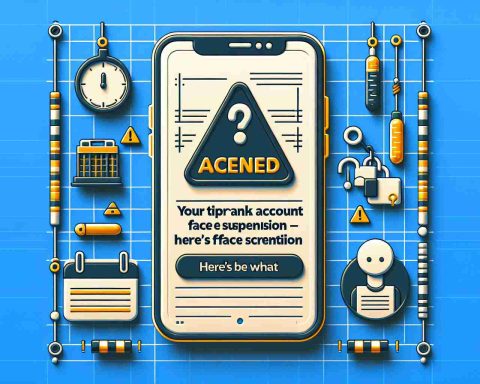In a transformative move, President Donald Trump has officially enacted an executive order named “Strengthening American Leadership in Digital Financial Technology.” This directive aims to boost the burgeoning digital asset sector in the United States. With the cryptocurrency world rallying support for his campaign amid stricter regulations under the Biden administration, this order underscores his commitment to positioning the U.S. as the global leader in cryptocurrency.
The executive order lays out significant policy initiatives, emphasizing the need to defend citizens’ rights to utilize digital assets. It also advocates for the expansion of blockchain tech development, all while safeguarding the integrity of the U.S. dollar through enhanced support for dollar-backed stablecoins. Moreover, it expresses caution against potential risks associated with central bank digital currencies (CBDCs).
This initiative serves as a rebuttal to what many in the cryptocurrency community have perceived as regulatory overreach from the previous administration, particularly during “Operation Chokepoint 2.0.” Notably, David Sacks, previously recognized for his work in AI and digital currencies, has been appointed to lead the newly formed “President’s Working Group on Digital Asset Markets.” This team will focus on creating transparent regulations affecting the industry, targeting key governmental departments.
The establishment of a ‘national digital asset stockpile’ from crypto legally seized by authorities is also part of the agenda, signaling an innovative approach to leveraging cryptocurrency for national interests. With this order, Trump signals a clear intent to elevate digital asset policy to a vital concern on the national stage, paving the way for growth and innovation in the digital finance landscape.
Implications of Digital Asset Regulation on Society and the Global Economy
The enactment of President Trump’s executive order on digital financial technology carries significant implications for society and the global economy. As the United States positions itself as a leader in cryptocurrency, it could reshape financial ecosystems worldwide. A robust digital asset framework may facilitate cross-border transactions, potentially reducing dependence on traditional banking systems. This shift poses both opportunities and challenges: while it promises greater financial inclusion, it may also deepen existing inequalities if access to technology remains uneven.
Culturally, increased acceptance of cryptocurrencies could lead to broader shifts in consumer behavior. The proliferation of blockchain technology is expected to influence various sectors, from supply chain management to arts, through innovations like NFTs. The collective embrace of digital currencies may also alter perceptions of value and ownership, transforming how society interacts with financial tools and assets.
On an environmental level, the growing cryptocurrency sector faces scrutiny concerning energy consumption. The mining of digital currencies has been criticized for its carbon footprint, calling for sustainable practices amid the industry’s expansion. Future trends may focus on green blockchain solutions, promoting renewable energy sources to power mining operations.
Long-term, the establishment of a national digital asset stockpile could redefine state relationships with cryptocurrencies, suggesting a future where governments not only regulate but actively engage as participants in the market. This could have lasting effects on economic policies and the regulatory landscape as countries vie for dominance in the digital finance space.
Trump’s Game-Changing Executive Order: What It Means for the Future of Cryptocurrency
The recent executive order signed by President Donald Trump, titled “Strengthening American Leadership in Digital Financial Technology,” marks a significant moment for the digital asset landscape in the United States. This directive aims not only to enhance the growth of the cryptocurrency sector but also to position the U.S. as a global leader in this rapidly evolving market.
Key Features of the Executive Order
1. Rights to Digital Assets:
The order emphasizes the defense of citizens’ rights to utilize digital assets, signaling a protective stance for individuals engaging in the cryptocurrency market.
2. Blockchain Technology Development:
The directive advocates for the expansion of blockchain technology development, recognizing its potential to drive innovation and economic growth.
3. Support for Stablecoins:
Enhancing support for dollar-backed stablecoins is a strategic move to maintain the integrity of the U.S. dollar while allowing for stable digital transactions.
4. Caution on CBDCs:
The executive order expresses concern regarding central bank digital currencies (CBDCs), highlighting the need to assess risks and mitigate potential pitfalls that may arise from adopting such currencies.
5. President’s Working Group on Digital Asset Markets:
David Sacks, known for his work in AI and digital currencies, has been appointed to lead a new initiative aimed at developing transparent regulations for the digital asset industry. This group will collaborate with key governmental departments to establish clear guidelines that promote growth while ensuring consumer protection.
Use Cases and Market Predictions
With this executive order, several potential use cases for digital assets are emerging, including:
– Enhancing Financial Transactions: Improved efficiency and security for online transactions via blockchain technology.
– Decentralized Applications (dApps): Promoting the creation of decentralized applications that can operate without central authority, benefitting from enhanced user privacy and security.
– Investment Opportunities: The formation of a national digital asset stockpile represents a new method for the government to leverage cryptocurrencies, potentially opening up new avenues for investment and national revenue generation.
Pros and Cons
Pros:
– Establishes a clear legal framework for digital assets.
– Encourages innovation and development in blockchain technology.
– Offers protection for citizens entering the digital asset space.
Cons:
– Potential regulatory burdens could stifle smaller companies and startups.
– Concerns over financial privacy and the implications of a national digital asset stockpile.
– The future of CBDCs remains uncertain, leading to concerns within the financial community.
Innovations and Security Aspects
The executive order reflects a broader trend of governments around the world exploring regulations and frameworks for cryptocurrencies. Innovations anticipated include advancements in regulatory technology to ensure enhanced security for digital transactions, preventing fraud, and promoting user trust.
Looking Ahead: Market Analysis
As digital currencies gain traction, the market is poised for expansion. This executive order could set a precedent for other nations to follow, potentially creating a more cohesive global regulatory environment for cryptocurrencies. With a focus on innovation and security, the U.S. could play a pivotal role in shaping the future of digital finance.
In conclusion, President Trump’s new executive order positions the U.S. towards reclaiming and enhancing its leadership in the digital asset sector, while establishing the foundation for a more robust, secure, and innovative future in digital finance. For more updates on digital assets and financial technology, visit the White House.









